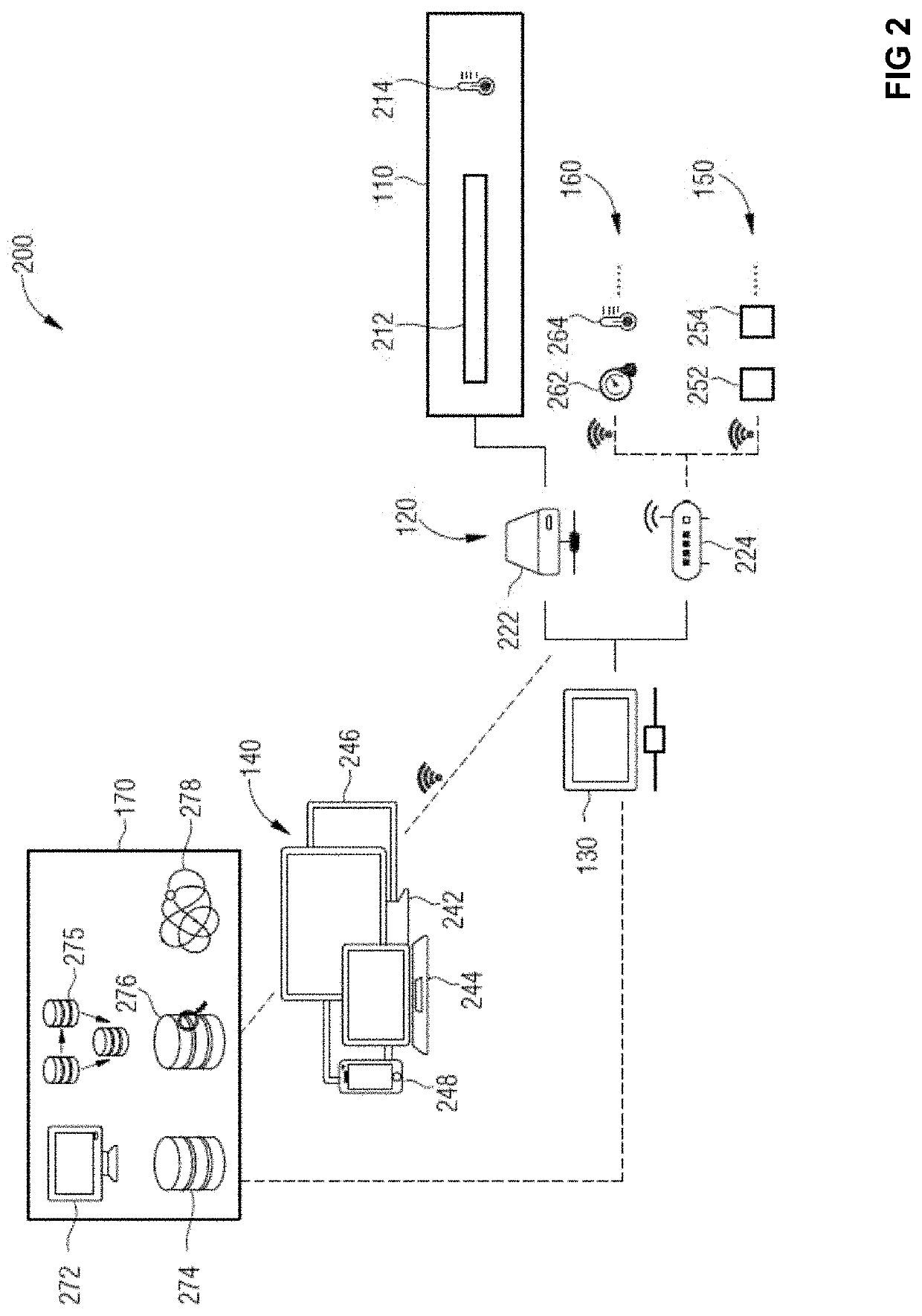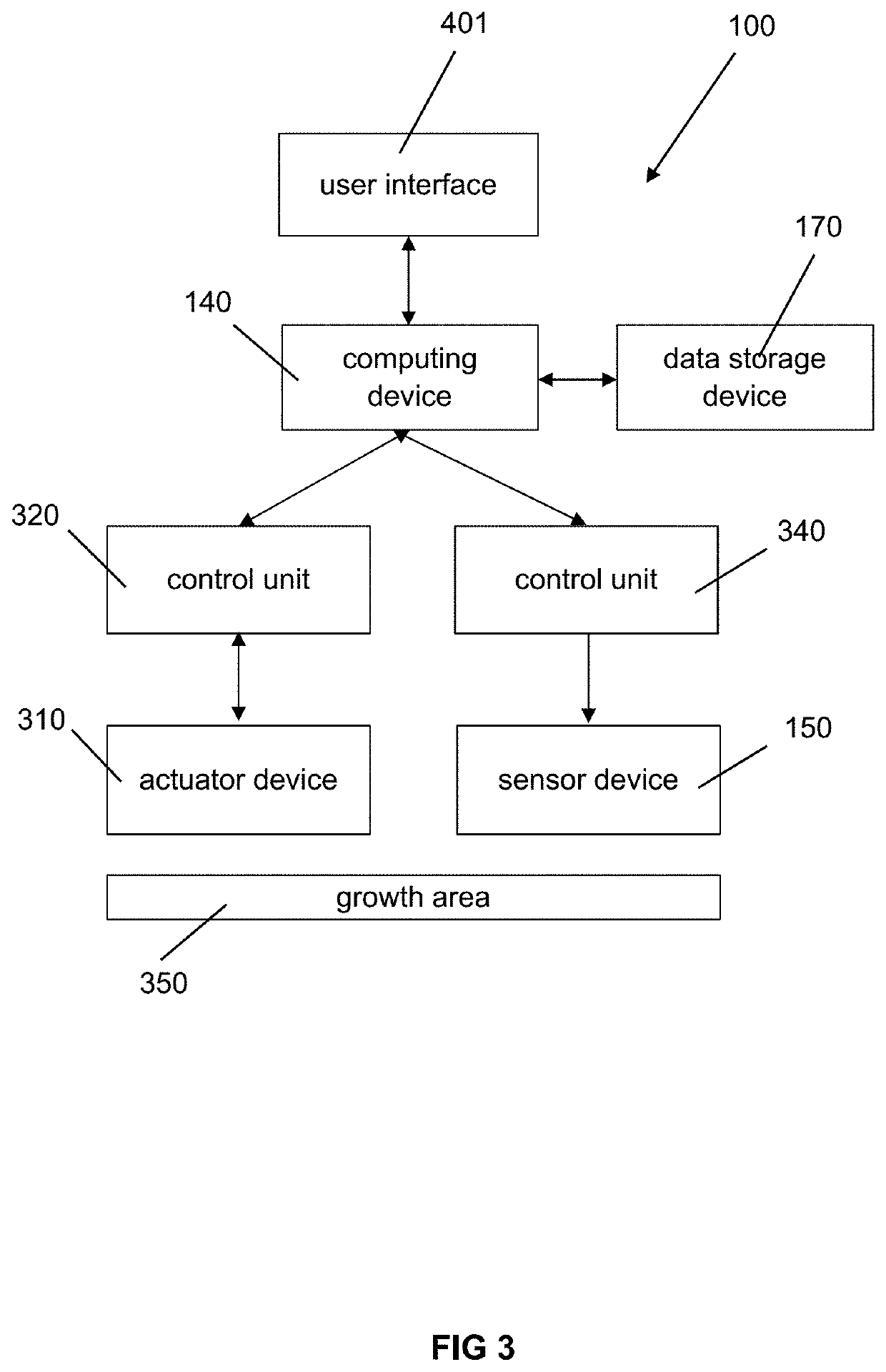Controlled Agricultural Systems and Methods of Managing Agricultural Systems
a technology of agricultural systems and agricultural systems, applied in the field of controlled agricultural systems, can solve the problems of over-fertilization and depletion of soil, reducing the energy consumption of artificial lighting, and increasing the limits of traditional farming
- Summary
- Abstract
- Description
- Claims
- Application Information
AI Technical Summary
Benefits of technology
Problems solved by technology
Method used
Image
Examples
Embodiment Construction
>The detailed description is described with reference to the accompanying figures. In the context of this description, the terms “connected” and “coupled” are used to describe both a direct and an indirect connection and a direct or indirect coupling.
[2271]System Setup
[2272]FIG. 1 illustrates schematically a Controlled Agricultural System 100 according to various embodiments.
[2273]An agricultural light fixture 110 is connected to an intelligent driver unit 120. The intelligent driver unit 120 is configured to transmit a first signal 102 to the agricultural light fixture 110. The connection between the agricultural light fixture 110 and the intelligent driver unit 120 may be a wired connection or a wireless connection. The transmitting signal 102 may conform to a common communication protocol. The intelligent driver unit 120 is connected to a light control unit 130. The light control unit 130 is configured to transmit a second signal 104 to the intelligent driver unit 120. The first ...
PUM
 Login to View More
Login to View More Abstract
Description
Claims
Application Information
 Login to View More
Login to View More - R&D
- Intellectual Property
- Life Sciences
- Materials
- Tech Scout
- Unparalleled Data Quality
- Higher Quality Content
- 60% Fewer Hallucinations
Browse by: Latest US Patents, China's latest patents, Technical Efficacy Thesaurus, Application Domain, Technology Topic, Popular Technical Reports.
© 2025 PatSnap. All rights reserved.Legal|Privacy policy|Modern Slavery Act Transparency Statement|Sitemap|About US| Contact US: help@patsnap.com



